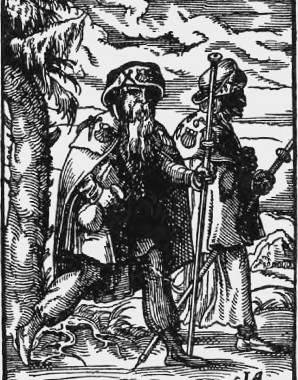Holy Business
Monasteries, Pilgrimages and Trade
The bones of saints, as well as their hair and nails, were revered as relics, as were objects which had some connection with them or which they were supposed to have touched. All these things were the basis of a flourishing trade, albeit one where deals often had to be disguised as barter or theft because it did not always meet with the approval of the church authorities. The markets held in monasteries – sometimes even in cemeteries – were also often connected with the worship of saints and relics.
Another branch of the economy that developed in the Middle Ages in connection with religion was the result of the increasing number of pilgrimages. Pilgrims not only left their money in hostels and the places of worship they travelled to but also made a financial contribution to the maintenance of infrastructure such as roads and bridges through the tolls that they paid.















